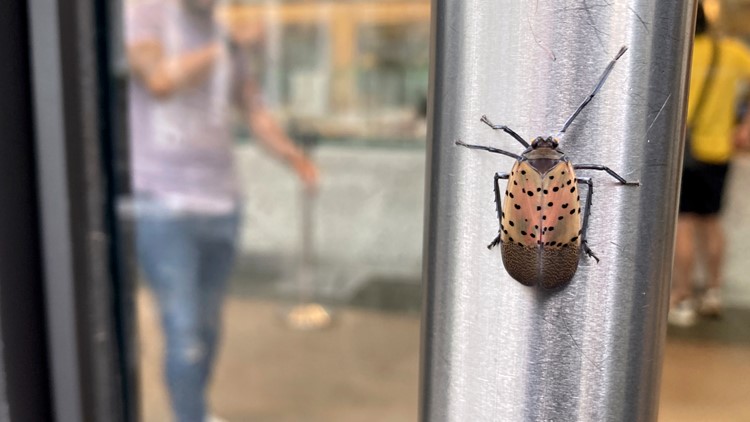HARRISBURG, Pa. — The Pa. Governor's Invasive Species Council shared findings from the first statewide survey of impacts from invasive plants, insects, pathogens and animals.
The council also announced a pilot test of a regional invasive species management program that will launch this summer.
Last fall, the Pennsylvania Invasive Species Impacts Survey was launched to hear directly from Pennsylvanians about the impacts they're experiencing from invasive species.
Gov. Shapiro's proposed budget provides $34 million to support the Department of Environmental Protection's work to continue to combat and respond to emergencies and disasters. In addition, $3 million will be used to combat spotted lanternflies and other invasive species.
“A biodiverse native ecosystem provides the natural resources that are essential to our lives, from agricultural food production to outdoor recreation and fishery, timber, and other industries,” said Department of Environmental Protection Acting Secretary Rich Negrin.
“The Governor’s Invasive Species Council is working proactively to help protect the natural resources Pennsylvanians depend on and treasure," he continued.
The program would bring together expertise from local and state government, industry, community and academic organizations. Across the state, six Partnerships for Regional Invasive Species Management (PRISM) would be established.
Over 350 survey respondents said a PRISM program would help them, and over 380 said they’d like to participate in a PRISM in their region, according to a press release put out by the Shapiro administration.
The Council and the Pennsylvania Association of Conservation Districts (PACD) will partner to pilot-test a small-scale version of a PRISM program in 13 northwest counties in July.
Using $210,000 from the U.S. Department of Agriculture Forest Service, PACD will conduct on-the-ground projects to remove invasive species and educational outreach to help prevent the introduction of invasives.
In addition, PACD will develop a strategic plan identifying priorities and committed partners for the region.
Participants in the Pennsylvania Invasive Species Impacts Survey represented every county across the state. They reported problems with invasive species in a range of settings: 70% in parks, forests, or other natural areas on land; over 50% in or along waterways, on roadsides, and in urban and suburban areas; and 30% in agricultural areas, including tree nurseries, timber lots, vineyards, and farms.
More than 600 participants described firsthand experiences with one to three invasive species. They reported impacts from more than 100 species, including spotted lanternflies, mile-a-minute vines, Japanese stiltgrass, barberry shrubs, zebra mussels, and many others.
Emerald ash borer was among the species reported most often. Since this beetle hit Pennsylvania in 2007, it’s destroyed thousands of ash trees, a mainstay of the timber industry.
“The survey results confirm that Pennsylvanians are concerned about protecting their livelihoods and our beautiful ecosystem from the scourge of invasive species,” Department of Conservation and Natural Resources Secretary Cindy Adams Dunn said. “This Council has been tasked with minimizing the harmful ecological, economic, and human health impacts of invasive species, and it is critical we act on this survey to fulfill the mandate of protecting the Commonwealth’s natural resources.”
Many respondents cited constricted access to lakes, community parks, and trails. Others reported lost timber and reduced forest regrowth, causing economic loss. Invasive species have damaged grapevines, fruit trees, and crops and the function of wetlands and agricultural streambank buffers.
“The economic damage invasive species inflict on our food crops and livestock, landscaping, and forest products is difficult to measure,” said Agriculture Secretary Russell Redding. “As climate change makes Pennsylvania’s environment more hospitable to invasive plants and insects, our quality of life is also hit hard. Gathering this information on how invasive species affect Pennsylvanians’ lives and bottom lines is a great step toward quantifying the damage and informing efforts to manage invasives and prevent future harm.”
More information about the program can be found here.



